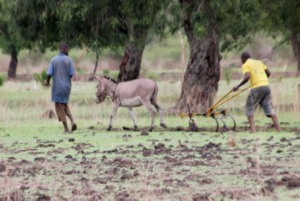Food Insecurity
It’s hard to understand food insecurity when all we have to do is run to the grocery store, but for billions of people worldwide – including 13.8 million American households[1] – it intrudes every day.

According the U.S. Department of Agriculture, food insecurity is a household-level economic and social condition of limited or uncertain access to adequate food. In other words, you don’t really know where your next meal is coming from, or if it will even be there at all. Consequences of systemic food insecurity and hunger include poor physical and mental health as well as malnutrition, which can have lifelong effects for children.
Unhealthy ultra processed foods such as instant noodles and sodas are increasing in prevalence and affordability. Overconsumption leads to worse health outcomes, even in countries battling effects of undernutrition such as stunting and those with rapidly increasing obesity rates linked to noncommunicable diseases such as diabetes, cardiovascular disease, and cancer.
Want to Know More?
Read this UN Report!
Causes of Food Insecurity
Many West African countries are dependent on agriculture for survival – In Liberia agriculture makes up 76.9% of GDP, in Somalia 60.2%, and Guinea-Bissau 55.8%.[2] And yet food insecurity remains high, as does malnutrition. For countries heavily dependent on rain-fed subsistence farming and foreign imports to feed their people, the last two decades of climate change, foreign conflict, and global crises has taken a heavy toll.
In The Gambia, rising sea levels not only threatens low-lying Banjul, it pushes salty water farther and farther upriver. Once plentiful rice fields now lie abandoned, invaded by salt. Farmers who once grew enough to feed their families for the whole year now only produce enough for 2-6 months. And it’s not just rice. Many women grow vegetables to support incomes or to eat, but changes in precipitation patterns leave precious crops withering in the ground or swept away by floodwaters.
… the ongoing war in Ukraine, involving two of the biggest global producers of staple cereals, oilseeds and fertilizer, is disrupting international supply chains and pushing up the prices of grain, fertilizer, [and] energy …

Conflicts, such as the war in Ukraine, are felt around the world – food prices continue to rise in America just like they have in The Gambia, India, and Mali. But the war has also hiked up prices on other vital commodities: fertilizers and animal feed. Not only do these subsistence farmers now struggle to put food on the table this year, they cannot afford to produce food for next year.
Even when warring countries don’t control the majority of the world’s grain supply, conflicts cause massive deteriorations in food security, such as the ongoing Israel-Hamas war or gang violence in Haiti.
Of course, global crises are not only violent. COVID-19, for example, has been devastating to economies around the world. In fact, according to WHO, the pandemic has produced a global economic recession that “ended three decades of global progress in poverty reduction, contributed to an estimated increase of close to 90 million people facing hunger in just one year.” For those who lost jobs, the rising cost of food, in conjunction with reduced household incomes has meant a drastic increase in the number of households experiencing food insecurity.

Tomorrow
As the world put itself back together again, we must come together to ensure that poor nations like The Gambia, dependent on agriculture and tourism, can revitalize their industry, economy, and agriculture. In The Gambia, for example, the river pours into one of the richest fishing zones in the world, yet lacks the infrastructure to take advantage. Irrigation and water management would improve the success of Gambian farming, as would further modernization of farming techniques.
By developing sustainable agricultural practices – including irrigation – and climate-conscious programs that will uplift local producers as well as nations, we can reach for the end of food insecurity and build a brighter, sustainable future for all.
[1] https://health.gov/healthypeople/priority-areas/social-determinants-health/literature-summaries/food-insecurity
[2] https://www.worldatlas.com/articles/countries-most-dependent-on-agriculture.html
